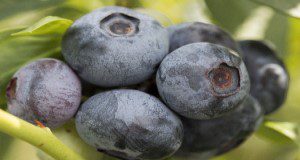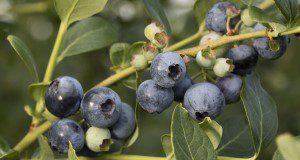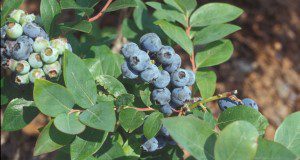There is a growing market in the United States and globally for fresh fruits and vegetables with reported health-enhancing properties. This includes blueberries, which are high in antioxidants and have been reported to improve heart health and contain anticancer properties. Fresh-market blueberry sales (conventional and organic) increased by 27% between 2013 and 2017, and that trend is expected to continue. In addition, there is an increasing level of consumer interest in organically grown produce (for environmental conservation, taste, and other perceived benefits), for which some consumers are willing to pay a premium over the price for a conventionally produced crop. This new 8-page publication of the UF/IFAS Horticultural Sciences Department discusses various aspects of organic blueberry production in Florida and is intended for use by those currently using or interested in pursuing organic production. Written by Douglas A. Phillips, Peter J. Dittmar, Philip F. Harmon, Oscar E. Liburd, Danielle D. Treadwell, and Jeffrey G. Williamson.
https://edis.ifas.ufl.edu/hs1400
Tag: Doug Phillips
Mite Pests of Southern Highbush Blueberry in Florida
This 4-page document discusses life cycles, damage, monitoring, and management of southern red mites and false spider mites in southern highbush blueberries. Written by Oscar E. Liburd, Lorena Lopez, and Doug Phillips, and published by the UF/IFAS Entomology and Nematology Department, June 2020.
https://edis.ifas.ufl.edu/in1284
Nutrition and Fertilization Practices for Southern Highbush Blueberry in Florida
Research and field experience have demonstrated that fertilization is necessary to achieve proper growth and high yields in cultivated production of blueberries. This new 7-page publication of the UF/IFAS Horticultural Sciences Department provides guidance and management suggestions to Florida growers of southern highbush blueberry (SHB) for monitoring, supplying, and maintaining proper plant nutrition in commercial production operations. Written by Doug Phillips and Jeffrey G. Williamson.
https://edis.ifas.ufl.edu/hs1356
Florida Blueberry Leaf Disease Guide
Southern highbush blueberry (SHB) cultivars are commercially grown throughout much of Florida, in both deciduous and evergreen production systems. In both systems, leaves can be damaged by many factors including environmental conditions, chemical applications, insects, and diseases. This new 12-page publication of the UF/IFAS Plant Pathology Department includes basic information to assist growers in determining 1) the likely cause (fungal, viral, algal, or bacterial) of leaf symptoms, 2) when specific leaf spots are likely to occur, 3) characteristic symptoms of common leaf problems, and 4) some of the management options that are available. Written by Douglas A. Phillips, Norma C. Flor, and Philip F. Harmon.
http://edis.ifas.ufl.edu/pp348
Blueberry Gall Midge on Southern Highbush Blueberry in Florida
Blueberry gall midge is a small fly native to North America that feeds on blueberries and cranberries. It can be found throughout the United States, including Florida, where its larvae feed on southern highbush blueberry and rabbiteye floral and vegetative buds. Reports of blueberry gall midge damage on southern highbush blueberry in Florida have become more common in recent years, in some cases significantly impacting yield where there was severe feeding damage to floral buds. This 3-page fact sheet written by Oscar Liburd and Doug Phillips and published by the UF/IFAS Department of Entomology and Nematology will inform growers how to scout for, identify, and control blueberry gall midge.
http://edis.ifas.ufl.edu/in1239




